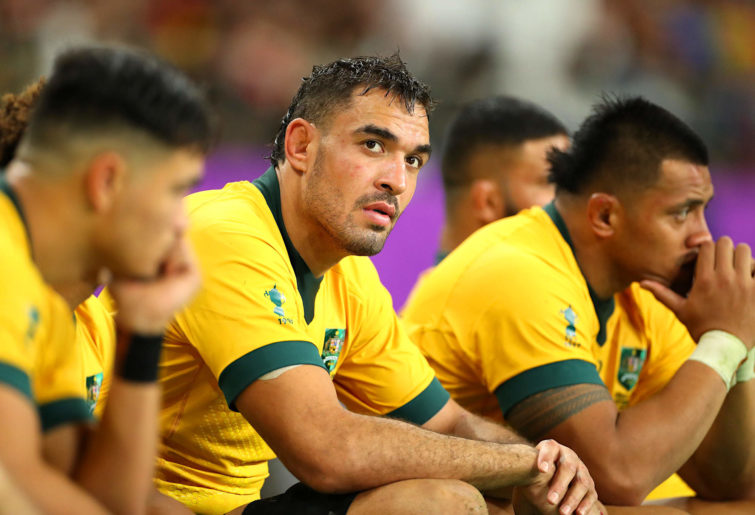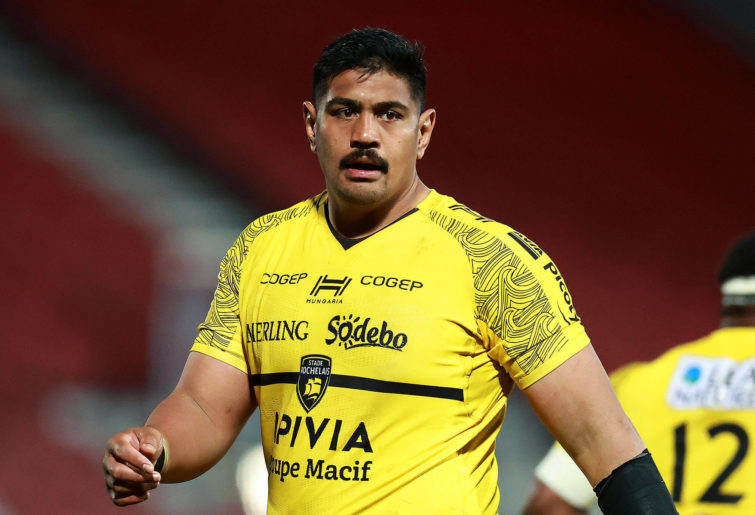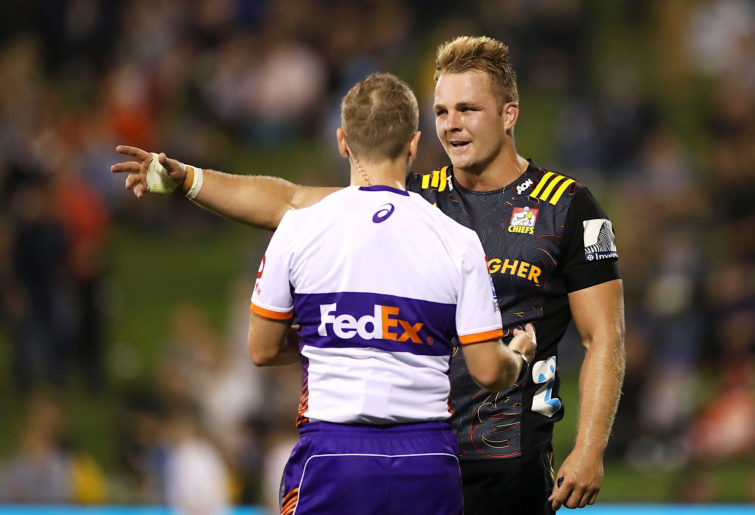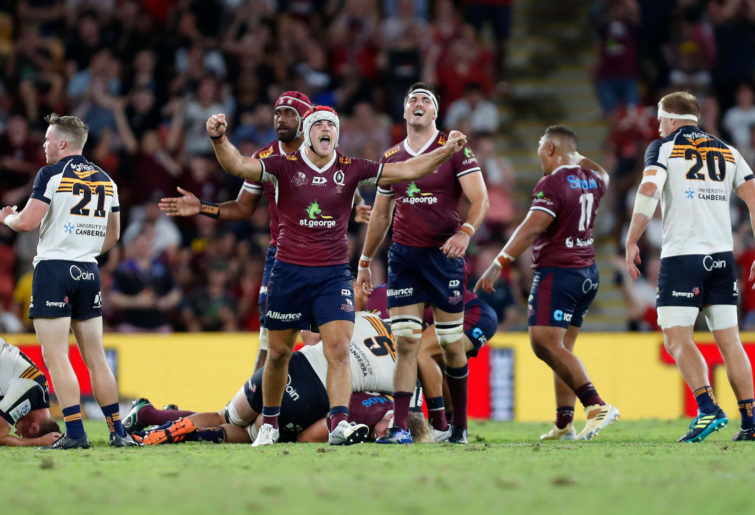Thanks once more to all who offered a question for this week’s edition of Coach’s COrner. It is always appreciated.
If Dave Rennie wanted to target two overseas players to bring into the Wallabies, who would be the most important?
– Tony Hodges
Rory Arnold would be one, and big Will Skelton the other. They stand out for me. Heineken Cup final… three of the four locks should be Australians!– Mzilikazi
How good was Will Skelton for La Rochelle on the weekend? Do you think Skelton’s playing style would fit into the Wallabies under the current coaches? In my opinion, our two best locks are playing in the Top 14 at present.
– Mused6
Has Dave Rennie got rid of his rule to bring back two overseas players for the Wallabies? If so, do you think that Giteau’s Law will change to some degree to bring back some of our bigger names, especially in the forward pack?
– Take the Points
If there is one position in which Dave Rennie will be thinking of urgent recalls from overseas, it is in the second row. He will already get Matt Philip back from the Pau club in France, but the spot next to him for the July series with France is most definitely open to offers.
It is probably not an exaggeration to state that the top four Australian second-rowers are plying their trade in the Top 14 at the moment. Apart from Matt Philip, it is no accident that the two sides contesting the European Champions Cup final – Toulouse and La Rochelle – will feature three of them: the Arnold twins for Les Rouges et Noires, and massive Will Skelton for Stade Rochelais.
Below is a table showing some comparative stats between the second rows of national interest in Super Rugby AU, and those four playing in France:
| Mins between carries | Gain-line +/- | Decisive outcomes | Lineout wins/steals | Mins between tackles | Tackle completion rate | Passive tackle rate | |
|---|---|---|---|---|---|---|---|
| Darcy Swain | 23.3 | +2 | 0 | 24/0 | 7.1 | 88% | -10% |
| Cadeyrn Neville | 13.1 | +5 | +2 | 41/1 | 6.9 | 91% | -18% |
| Lukhan Salakaia-Loto | 11.3 | +4 | +3 | 36/0 | 11.9 | 77% | -10% |
| Lopeti Timani | 7.7 | +2 | +1 | 11/2 | 8.6 | 90% | -4% |
| Trevor Hosea | 16 | +3 | +2 | 30/3 | 10.1 | 91% | -14% |
| Seru Uru | 7.6 | +6 | +6 | 17/4 | 9.7 | 90% | -24% |
| Rory Arnold | 10.9 | +8 | +8 | 42/5 | 8 | 88% | -4% |
| Richie Arnold | 11.2 | +1 | +7 | 50/5 | 7.3 | 87% | -14% |
| Matt Philip | 7.9 | +8 | +5 | 27/9 | 10.3 | 89% | -19% |
| Will Skelton | 8.8 | +23 | +4 | 4/0 | 14.4 | 90% | +2% |
Some of the categories will be familiar from the back-row comparison last week. There is more emphasis on contributions at the lineout and on the gain-line in attack and defence.
In the purely numerical categories, the Top 14 players will have played more minutes than their Super Rugby counterparts. The ‘passive tackles’ category measures dominance on the gain-line in defence – the closer to zero, the better. Some important points emerge from the data.
The best overall second-row performer is still Rory Arnold. He has an excellent work rate on both sides of the ball, is in the top three for hard defence, and has developed new skills on attack in the Toulouse culture.
With everyone available, Arnold and Philip look to be the top pairing for Dave Rennie. The combination would provide excellent ball-stealing potential at lineout time, as well as meaningful ball carries.

Rory Arnold. (Photo by Dan Mullan/Getty Images)
Within Super Rugby, the best partner for Arnold/Philip could turn out to be Sitaleki Timani, who has the best work rate and most physical defence of all the home-based locks.
The biggest chart-dropper in 2021 is Lukhan Salakaia-Loto, whose work rate and defensive production do not fare well in the comparison.
The obvious bench pick is Will Skelton, with massive ball-carrying stats and the only ‘plus’ number in the short defence category. With a primary lineout jumper in the back row, Skelton could conceivably start. Intriguingly, he also had ten jackal turnovers in Top 14 play – a new development.
Seru Uru and Trevor Hosea are the most promising young prospects – although Uru’s stats also include minutes played in the back row.
Leinster endured rather than enjoyed the Skelton experience against La Rochelle in the semi-final of the European Champions Cup last weekend. His impact in collisions – coupled with a newly discovered eagerness for work – is almost impossible to counteract.
Here are a couple of Big Will’s cleanouts from the game:
In the first example, Skelton simply swamps Leinster number 12 Robbie Henshaw, who is well established over the tackle ball. Henshaw is a very physical midfielder but the outcome is 1.7-second ruck ball for Tawera Kerr-Barlow on the next phase.
In the second instance, Skelton is the second man up in support after the chip through is regathered, and he obliterates Garry Ringrose to open up the right corner of the ruck for Kerr-Barlow.
It was, however, Skelton’s ball carrying which made most of the difference on the day. He makes real progress, even in the toughest scenarios when the defence has only one side of the field to protect:
Those are two of Leinster’s premier tacklers, flankers Rhys Ruddock and Josh van der Flier, that Skelton is carrying with him in the first example; then driving through Ryan Baird and bumping off Tadhg Furlong in the second. Both instances produce sub-two-second ball for the next play.
The longer the game went on, the more effective Skelton became, and this is another positive development:
That was in the 64th minute of the match, with the fate of the game still in the balance.
Like Pone Fa’amausili, Will Skelton is the kind of ball-carrier who persuades coaches to create new attacking patterns from the lineout just to get him involved.
Again, that is Robbie Henshaw, probably the British and Irish Lions’ first choice at inside centre in the forthcoming Test series against South Africa, being brushed away – off little more than a standing start on first phase.

Will Skelton. (Photo by David Rogers/Getty Images)
Do we really need three referees?
– Stillmissit
Stellenbosch Rugby Club in South Africa trialled a two-ref system in 2014 for a full season via its internal Koshuis League.
– Just Nuisance
With between 200-250 breakdowns in a game and 35-40 minutes of ball-in-play time, it is becoming difficult work for one referee to police everything accurately for the full 80.
If you compare with another collision sport, in the NFL there is a seven-person umpiring crew who live and travel around the country as one team for the duration of the regular season. That means teams can begin to track how they work as a unit and establish a level of expectation about the calls they will make.
If we start by accepting that the job is getting too hard for one whistleblower in the middle, then the logical next step is to get the two sideline assistants on the field and more involved in the decision-making.
For that to work, you need the same crew working together, week in and week out, so the balance of responsibilities can be worked through, and an undue increase in the number of penalties avoided.

(Photo by Mark Kolbe/Getty Images)
Would you be able to analyse the different team’s abilities to force turnovers please?
– Bentnuc
Below is a short table on the turnovers in Super Rugby AU 2021.
| Team | Number of turnovers |
|---|---|
| Reds | 41 |
| Rebels | 40 |
| Force | 37 |
| Brumbies | 36 |
| Waratahs | 20 |
Not particularly interesting, except for the stats posted by the Waratahs. As noted in the comparative table in last week’s column, the NSW back-rowers tend to be saturated by a huge tackle count. Now, one of the main reasons is obvious – the team does not generate any turnover ball when the opponent has possession, so they simply have to keep tackling.
In the NFL, a defensive team’s takeaway capacity is probably its foremost measure of success as a unit. Looking back to the 2020 season, the Queensland Reds had a whopping 67 turnovers, with the twin sevens in their back row, Fraser McReight and Liam Wright, accounting for 31 of them. That is a 50 per cent increase on the entire NSW output via just two players.

Fraser McReight. (Photo by Regi Varghese/Getty Images)
Thoughts on today’s news that John Connolly is up for the role as Waratahs coach? Is there a practical case for ageism in the coaching sphere?
– Kashmir Pete
What I have against John Connolly being next Waratahs coach is he has not coached at a high level for a long time, the game has well moved past his methods/ideas. He would have so much catching up to do and you can’t just do it by theory and watching videos, you need to actually be in the coalface and experience it.– PeterK
Peter’s objections are highly relevant. John Connolly’s name has not been put forward for any of the big provincial jobs in the recent past, so it is a surprise to see it proposed for the Waratahs (especially given his Queensland background).
London Irish coach Les Kiss would probably be a better option, if available. Kiss has been involved in the professional game continuously in the UK, with Ireland, with Ulster and now with Irish in London.
He has been at the cutting edge of developments on the defensive side of the ball and has great knowledge of a raft of Australians who have played, or are still playing, with London Irish now – Adam Coleman, Sekope Kepu, Ollie Hoskins, Dave Porecki, Rob Simmons, Nick Phipps and Curtis Rona. Most of those have played for New South Wales in the past, and might be persuaded to do so again.
Maybe Les Kiss as head coach with Jason Gilmore underneath him as the chief support coach and ‘Knuckles’ overseeing matters as a director of rugby?
Sports opinion delivered daily
function edmWidgetSignupEvent() {
window.roarAnalytics.customEvent({
category: ‘EDM’,
action: ‘EDM Signup’,
label: `Shortcode Widget`,
});
}
Once again, a big thank you to all those who contributed a question, or helped progress one on the callout.
Original source: https://www.theroar.com.au/2021/05/07/coachs-corner-issue-11-is-it-time-to-bring-the-europeans-back-home/
source https://therugbystore.com.au/coachs-corner-issue-11-is-it-time-to-bring-the-europeans-back-home/
No comments:
Post a Comment